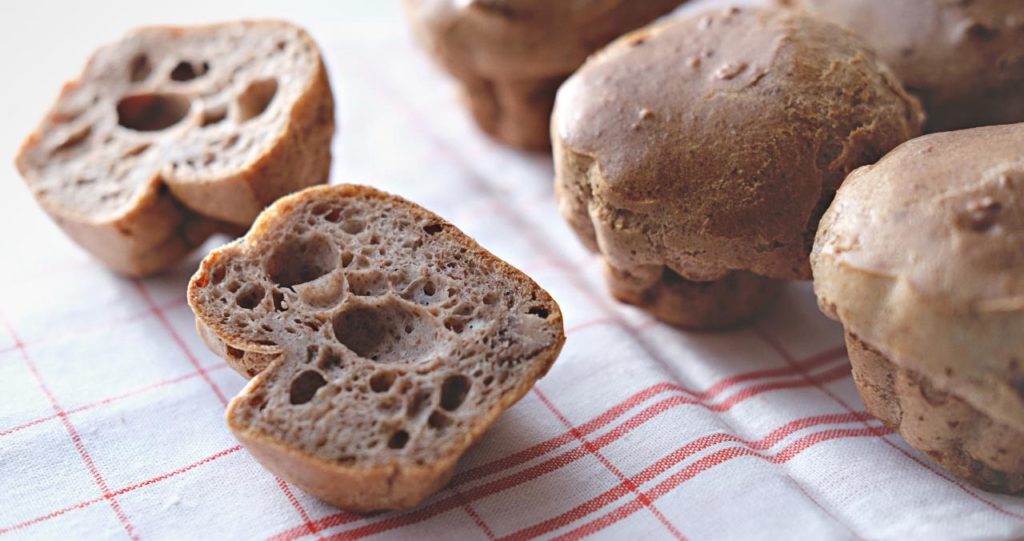Federated Health Charities’ mission is to improve the health and quality of life of all Ontarians by supporting 21 different health charities providing critical services to those experiencing, or affected by, illness. We believe education and prevention are key parts of supporting the health of our communities so our weekly Health Hint series strives to provide tangible and easy to implement hints and tips on how to maintain your health, prevent disease, and enjoy increased quality of life. Check out our latest Health Hint which takes a look at the relationship between exercise and carbohydrates consumption. We hope you find it helpful. If you would like to join our efforts to support the health of Ontario please consider a donation to Federated Health Charities.
Many of us know that carbohydrates are a type of macronutrient that we consume. But what is a carbohydrate? The word carbohydrate is made up of “carbo” which stands for carbon and “hydrate” which means water. This is because carbohydrates are made up of carbon, hydrogen, and water.
How do carbohydrates connect to exercise? Well, the conventional theory is that when you exercise, your body needs a lot of energy from carbohydrates and glycogen to fuel your muscle cells.
Many studies support the theory that carbohydrates can improve athletic performance, especially in endurance sports, and many athletes even supplement glucose directly. However, the human body can only store a limited amount of glycogen, allowing you to exercise for about two hours. When the body runs out of glycogen there will be weakness, extreme fatigue, and in extreme cases the body will almost collapse. As a result, exercise performance will also decline rapidly. When athletes get to this situation, they will choose to supplement carbon, and only in this way can they continue to persist.
Carbohydrates and energy sources to exercise
This must then mean that when people are on a low-carb diet they won’t have sufficient energy sources and, therefore, won’t we be able to exercise at all without quickly collapsing?
Of course, the answer is no. This is because when you go low-carbon, your body’s energy supply pattern changes. Many of us know the theory that if we adapt to a ketogenic diet, our bodies become adept at using fat for energy rather than glucose. For athletes, this means when glucose supplies within the body become insufficient, they can transition to fat for energy, allowing them to sustain their endurance levels for longer. This is their bodies switching the energy supply mode.
Advantages of a low carb, high-fat diet for exercise
More and more athletes are opting for a low-carb, high-fat diet, as described above, for several reasons. According to active people who practice this way of eating, some of the benefits include:
1) More abundant energy sources
Our bodies have limited storage capacity for carbon and water, generally enough for about two hours of ongoing exercise. Whereas our bodies have a much more abundant supply of fat at any given time, meaning we have increased stores of energy available for use if your body is in a fat burning state. As discussed, after adapting to a low-carb diet the body learns to utilize fat for fuel which allows it to tap into those increased energy supplies. Therefore, the risk of depleting your energy and “hitting a wall” while exercising can be significantly decreased. Also, the need to fuel throughout prolonged exercise is not necessary.
2) Faster post-exercise recovery
Many studies now show that athletes recover more quickly on a low-carb diet, as opposed to those relying on glucose for fuel. This has been shown to primarily be due to decreased levels of inflammation in the body, allowing the body to repair more rapidly (Mawer, 2017).
There are plenty of websites and books that provide keto or low-carb, high-fat guidelines, and recipes, but we thought we would provide you with one recipe to get you started! This recipe is from Maria Emmerich, you can check out her blog here, and it is for a low-carb bread option.
Keto Bread

Ingredients:
13 cup (134 ounces) ground psyllium husk powder
114 cup almond flour (5 oz.)
2 teaspoons of baking powder
1 teaspoon of salt
1 quart of water
2 teaspoons apple cider vinegar
3 beaten egg whites
sesame seeds, 2 tbsp (optional)
Instructions
- Preheat the oven to 350 degrees Fahrenheit (175 degrees Celsius).
- In a large mixing basin, combine the dry ingredients. Bring the water to a boil in a large pot.
- Toss the dry ingredients with the vinegar and egg whites and mix thoroughly. Add the hot water and beat for 30 seconds with a hand mixer. Don’t overmix the dough; it should have the consistency of Play-Doh.
- Shape dough into 6 individual rolls by moistening hands with a little olive oil. Place on a baking sheet that has been buttered. Optional sesame seeds can be sprinkled on top.
- Bake for 50–60 minutes on the lowest rack of the oven, depending on the size of your bread rolls. When you tap the bottom of the bun, you should hear a hollow sound.
- Serve with butter and your favourite toppings.
Special equipment is suggested.
An electric hand mixer or a food mixer.
What is the carb count of the keto bread?
Per bun, the keto bread has 2 net carbohydrates (a similar bun of regular bread may contain about 20 grammes of carbs). As a result, it’s a good ketogenic diet alternative.
Is it possible to substitute ingredients?
The ingredients and quantity used in baking, especially low-carb baking, are critical. This recipe’s eggs and ground psyllium husk are difficult to replace.
If you don’t like almond flour or have an allergy to it, you can substitute coconut flour in this recipe. Substitute a third as much coconut flour and double the quantity of egg whites for the almond flour.
To make your bread great for whatever you’re serving it with, season it with your preferred flavour. Garlic powder, crushed caraway seeds, or handmade bread seasoning can all be used.
(Emmerich & Franziska Spritzler, 2021)
We hope you enjoy this 100% gluten free bread and we hope you liked this week’s Health Hint!
Written by An Lin Chen
Blog posts related to exercise and carbohydrates
Health Hint! – 5 diets that could support your health
Health Hint! – How Sugar Can Lead to Inflammation
Health Hint! – Basics of Calories & Nutrients
References
Mawer, R. (2017, May 29). Low-carb/ketogenic diets and exercise performance. Healthline.
https://www.healthline.com/nutrition/low-carb-diets-and-performance.
How to train on a low-carb diet. Muscle & Fitness. (2020, November 30).
https://www.muscleandfitness.com/flexonline/training/low-carb-workout/.
Emmerich, M., & Franziska Spritzler, R. D. (2021, July 30). Best keto bread – #1 keto bread Recipe (Video). Diet Doctor. https://www.dietdoctor.com/recipes/the-keto-bread.






